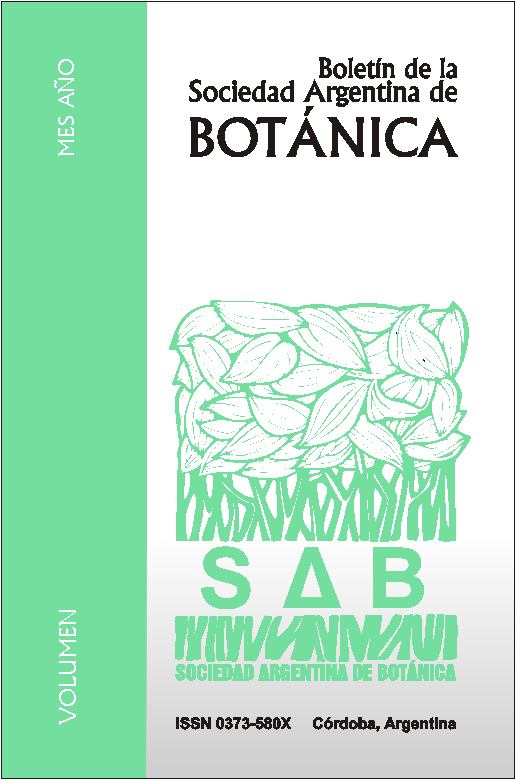Cytogeographic analysis in Turnera krapovikasii (Passifloraceae).
DOI:
https://doi.org/10.31055/1851.2372.v51.n1.14485Keywords:
Turnera krapovickasii, polyploidy, cytogeographyAbstract
Cytogeographic analysis in Turnera krapovikasii (Passifloraceae). Turnera krapovickasii is distributed at northwestern Argentina, southern Bolivia and western Paraguay. It presents diploid (2n= 2x= 10) and autotetraploid (2n= 4x= 20) cytotypes. Aiming to interpret the role of autopolyploidy in the evolution of this species, the frequency and spatial distribution of the cytotypes were analyzed. Equal frequencies of diploid and tetraploid populations were detected; most of them are constituted by only one cytotype, although some diploid populations presented triploid or tetraploid individuals. Diploids occupy a continuous area from southern Bolivia to northwestern Argentina, and from 124 to 1342 m.a.s.l. Tetraploids occur in disjunct areas, in Eastern and northern species area, in altitudes from 237 up to 810 m.a.s.l. The PCA showed a significant association between cytotype distribution and climate. Moreover, the ecological niche modelling analysis showed that the southeastern (Chaquenean Province) and eastern Bolivia (Cerrado Province) are the most probable areas of occurrence of diploids and tetraploids, , respectively. The cytotype distribution observed support the hypothesis that the expansion of the geographic area associated with polyploidy played an important role in the evolutionary history of T. krapovickasii.Downloads
Published
Issue
Section
License
Provides immediate and free OPEN ACCESS to its content under the principle of making research freely available to the public, which fosters a greater exchange of global knowledge, allowing authors to maintain their copyright without restrictions.
Material published in Bol. Soc. Argent. Bot. is distributed under a Creative Commons Attribution-NonCommercial-ShareAlike 4.0 International license.





